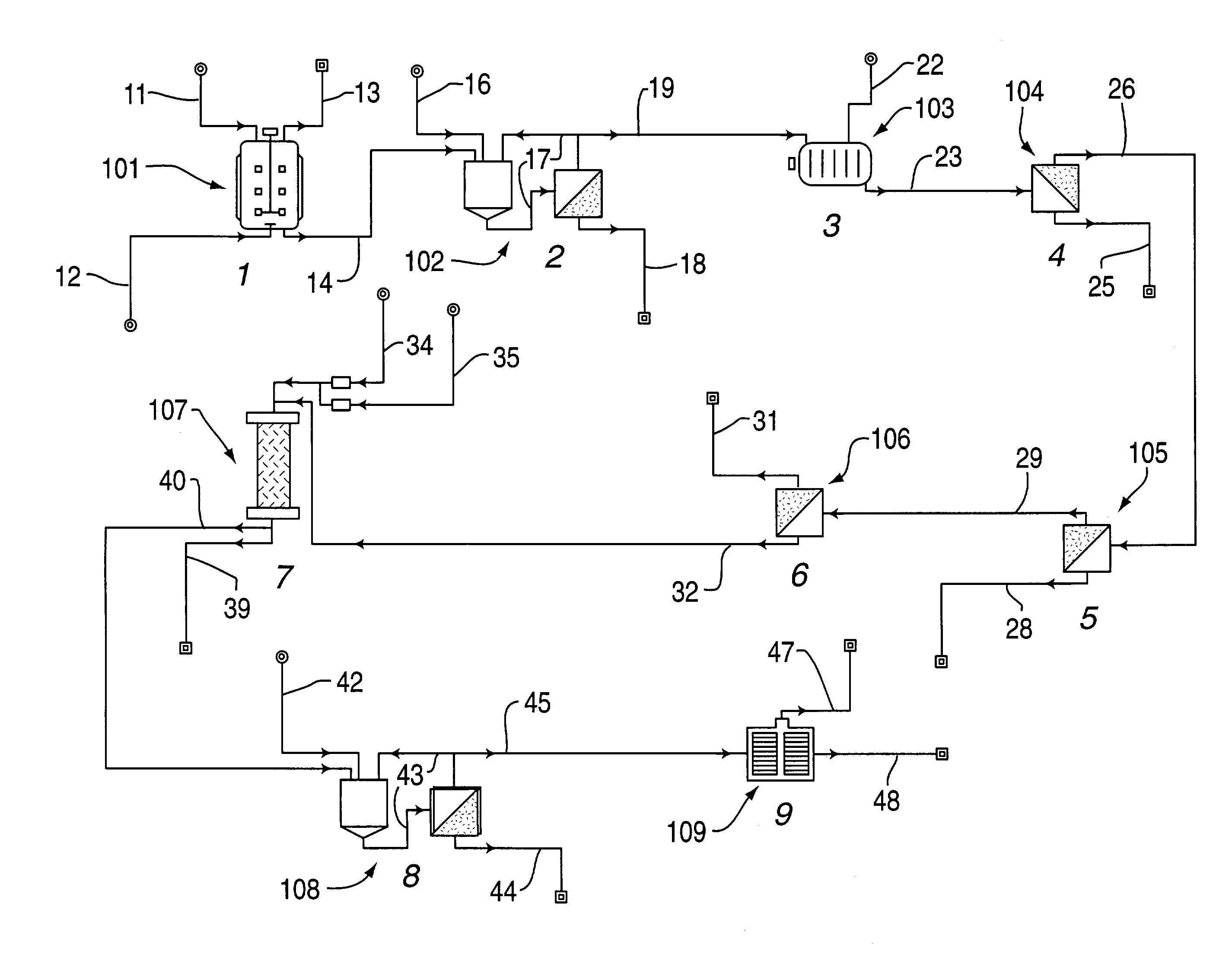Bioprocess for the production of recombinant anti-botulinum toxin antibody
a technology of recombinant antibodies and bioprocesses, which is applied in the field of production of recombinant antibodies (fab), can solve the problems of insufficient large-scale production, small total yield, and increased cos
- Summary
- Abstract
- Description
- Claims
- Application Information
AI Technical Summary
Benefits of technology
Problems solved by technology
Method used
Image
Examples
example 1
[0026]Five two-liter Erlenmeyer flasks containing 500 ml each of E. Coli cells in Terrific broth (TB) are used to seed a 150-liter fermentor. The fermentor is prepared using Terrific broth at a concentration of 47 g / L. Carbenicillin is added at two mg / ml stock, 1 ml stock Carbenicillin / Liter broth. After the optical density (@ 600 nm) of the cells have risen to approximately 0.7, isopropyl beta-D-thiogalactopyranoside (IPTG) is added over a two-hour interval to a final concentration of 1.0 mM. Initially 40% (46 ml) of this volume is added and 30% (34.5 ml) each hour thereafter until the final concentration is reached. The IPTG induces the protein (Fab) to be expressed over time. The fermentor is operated for approximately 30 hours.
[0027]The cells are concentrated to one-fifth their initial volume using two 0.22 um tangential flow membranes (5 ft2 each). The concentrations are diafiltered using Sonication Buffer (SB, 50 mM Na3PO4, 300 mM NaCl, pH 8.0 filtered with 0.22 um) five times...
example 2
[0030]Five two-liter Erlenmeyer flasks containing 500 ml each of E. Coli cells in Luria broth (TB) are used to seed a 150-liter fermentor. The fermentor is prepared using Luria broth at a concentration of 25 g / L. Carbenicillin is added at two mg / ml stock, 1 ml stock Carbenicillin / Liter broth. After the optical density (@ 600 nm) of the cells have risen to approximately 0.7, isopropyl beta-D-thiogalactopyranoside (IPTG) is added over a two-hour interval to a final concentration of 1.0 mM. Initially 40% (46 ml) of this volume is added and 30% (34.5 ml) each hour thereafter until the final concentration is reached. The IPTG induces the protein (Fab) to be expressed over time. The fermentor is operated for approximately 30 hours.
[0031]The cells are concentrated to one-fifth their initial volume using two 0.22 um tangential flow membranes (5 ft2 each). The concentrations are diafiltered using Sonication Buffer (SB, 50 mM Na3PO4, 300 mM NaCl, pH 8.0 & filtered with 0.22 um) five times. Th...
PUM
| Property | Measurement | Unit |
|---|---|---|
| Temperature | aaaaa | aaaaa |
| Temperature | aaaaa | aaaaa |
| Length | aaaaa | aaaaa |
Abstract
Description
Claims
Application Information
 Login to View More
Login to View More - R&D
- Intellectual Property
- Life Sciences
- Materials
- Tech Scout
- Unparalleled Data Quality
- Higher Quality Content
- 60% Fewer Hallucinations
Browse by: Latest US Patents, China's latest patents, Technical Efficacy Thesaurus, Application Domain, Technology Topic, Popular Technical Reports.
© 2025 PatSnap. All rights reserved.Legal|Privacy policy|Modern Slavery Act Transparency Statement|Sitemap|About US| Contact US: help@patsnap.com


